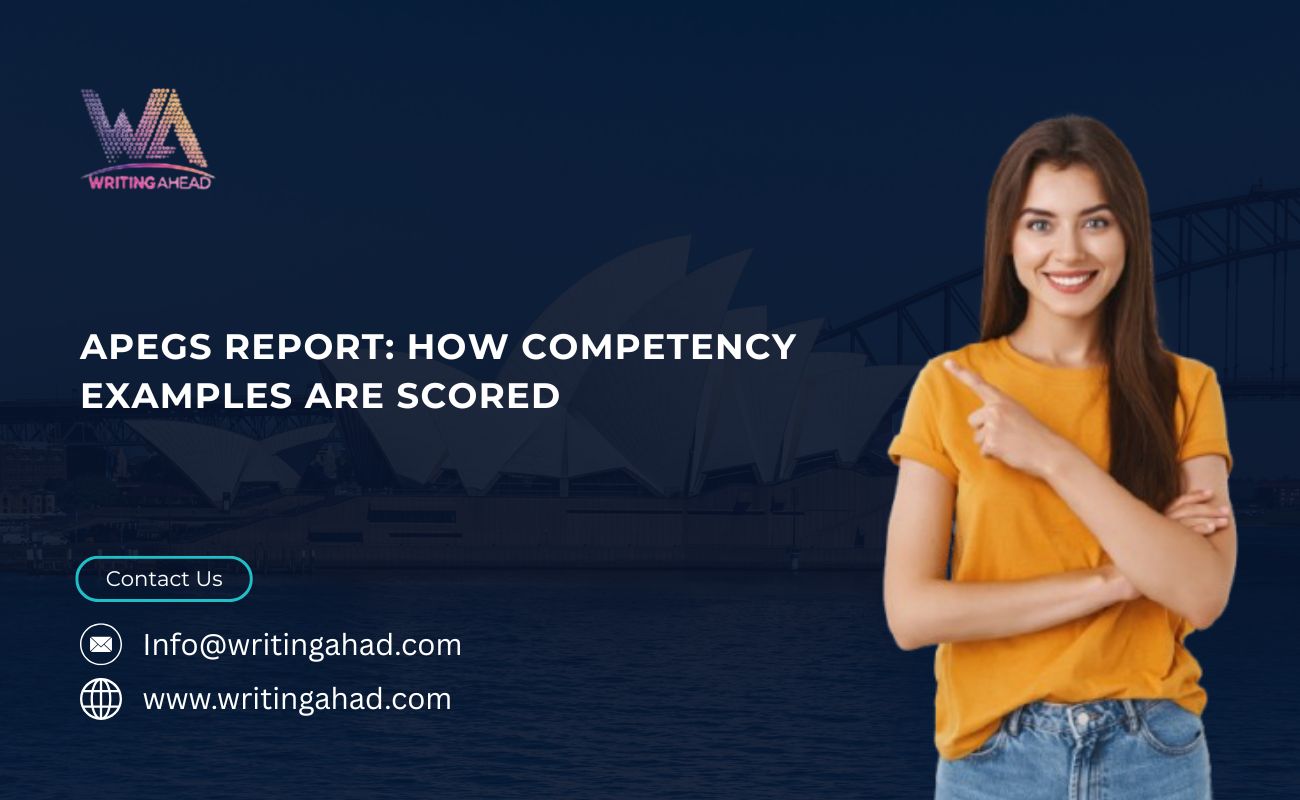The journey of professional engineering licensure involves more than just academic qualifications. One of the key requirements is the submission of an APEGS Report, which plays a pivotal role in demonstrating whether an applicant possesses the technical and professional skills expected of an engineer. The apegs competency assessment relies heavily on how competency examples are presented and scored. Understanding the evaluation process ensures that applicants showcase their capabilities in a structured and convincing manner.
The Purpose of Competency Assessment
The apegs competency assessment is not simply an administrative hurdle; it is a structured framework designed to evaluate readiness for professional engineering practice. This process bridges the gap between academic background and practical application.
Ensuring Professional Standards
The purpose of scoring competency examples is to guarantee that engineers meet globally recognized professional standards. By setting clear expectations, the assessment ensures that engineers entering the profession can apply theory in real-world situations, work ethically, and prioritize public safety.
Demonstrating Professional Readiness
Competency examples included in the APEGS Report illustrate the applicant’s growth, problem-solving skills, and project contributions. These examples are more than stories; they are evidence of real-world engineering application. Scoring ensures that these illustrations meet benchmarks of competence expected of practicing engineers.
Scoring Framework of Competency Examples
Each competency submitted within the APEGS Report is evaluated against standardized levels. These levels are used to determine whether an applicant meets, exceeds, or falls short of professional expectations.
The Four-Level Scale
Competency scoring generally follows a four-level rubric. Each level represents a step in professional maturity:
- Level 1 reflects academic understanding with minimal practical application.
- Level 2 shows some applied experience under guidance.
- Level 3 demonstrates independent application of knowledge in real-world contexts.
- Level 4 indicates advanced expertise, leadership, and oversight of complex engineering tasks.
Importance of Levels in the Assessment
For the apegs competency assessment, applicants are expected to provide examples that consistently demonstrate at least Level 2 or Level 3. These levels show practical experience, independence, and accountability. A higher number of Level 4 responses strengthens the case for professional competence.
How Reviewers Interpret Examples
Scoring competency examples is not mechanical. Reviewers critically evaluate the quality, relevance, and depth of each submission.
Emphasis on Clarity
Reviewers look for precise descriptions rather than vague generalizations. An example in the APEGS Report must clearly define the problem, outline the actions taken, and explain the results. Ambiguity lowers the score, as it suggests the applicant cannot communicate technical processes effectively.
Alignment with Competency Indicators
The apegs competency assessment is built on indicators such as technical competence, communication, project management, ethical responsibility, and leadership. Reviewers score each example by comparing it against these indicators. For instance, a project management example is scored based on evidence of planning, scheduling, budgeting, and resource allocation.
Quality Over Quantity
Applicants sometimes provide lengthy narratives, but scoring depends on the strength of the evidence rather than word count. Reviewers give higher scores to focused examples that showcase measurable outcomes, accountability, and reflection on lessons learned.
Key Factors Affecting Scoring
Competency scoring involves multiple variables. Understanding these factors helps applicants craft examples that resonate with reviewers.
Context of the Example
The context sets the stage for evaluation. A well-described scenario allows reviewers to understand the scale, complexity, and significance of the task. Without context, even strong technical work may appear incomplete.
Applicant’s Role and Responsibility
The APEGS Report must highlight the applicant’s direct contribution. Reviewers score examples based on actions taken by the applicant, not the team. Demonstrating independent responsibility for decisions, solutions, or designs increases the competency score.
Demonstrated Outcomes
Results must be clear and measurable. Whether it’s cost savings, improved efficiency, or safety compliance, outcomes validate the effectiveness of engineering decisions. Reviewers assign higher scores to examples where outcomes are quantifiable.
Structuring Examples for Higher Scores
Applicants often underestimate the importance of structure in presenting examples. A well-organized example makes it easier for reviewers to score fairly.
The STAR Method
The most effective way to present examples in the apegs competency assessment is through the STAR method:
- Situation: Define the problem or project.
- Task: Describe your responsibility.
- Action: Explain what you did to address the issue.
- Result: Present the outcome or achievement.
Using Technical Language Effectively
Reviewers are engineers themselves, so they expect technical accuracy. Avoiding overly general statements and providing specific data enhances the credibility of the submission.
Avoiding Common Pitfalls
Applicants should avoid examples where their role is unclear, outcomes are vague, or the narrative focuses on team effort instead of personal accountability. These issues reduce scoring potential.
The Role of Reviewer Calibration
The scoring of competency examples is standardized through reviewer training. This ensures fairness and consistency across applicants.
Ensuring Objectivity
Multiple reviewers may assess the same APEGS Report to minimize bias. They use calibration sessions to align interpretations of the scoring scale.
Balancing Technical and Professional Skills
Reviewers not only score technical abilities but also evaluate ethical judgment, teamwork, and communication. A strong example must balance technical rigor with professional conduct.
Strategies to Improve Scoring Outcomes
Applicants can increase their chances of scoring well by adopting strategic approaches.
Selecting the Right Examples
Choosing complex, impactful, and personally significant examples results in higher scores. A mix of technical and managerial cases demonstrates well-rounded competence.
Reflecting on Lessons Learned
Examples that highlight professional growth stand out. Reflecting on challenges, mistakes, and improvements shows maturity and self-awareness.
Reviewing and Refining Submissions
Before finalizing the APEGS Report, applicants should review their examples for clarity, technical depth, and alignment with scoring indicators. Peer review from colleagues or mentors also improves quality.
Broader Impact of Scoring on Licensure
Competency scoring is more than a procedural requirement—it directly influences the applicant’s professional trajectory.
Pathway to Professional Recognition
A strong score across competencies demonstrates readiness for independent practice. The apegs competency assessment ensures only qualified individuals are granted professional status, safeguarding the public and enhancing the reputation of the engineering profession.
Encouraging Lifelong Learning
The scoring process encourages applicants to reflect on their careers, identify strengths, and acknowledge areas needing improvement. This mindset fosters continuous professional development.
Conclusion
The scoring of competency examples in the APEGS Report is a rigorous yet fair process designed to ensure that engineers meet professional standards. The apegs competency assessment evaluates not just technical skills but also leadership, communication, and ethical responsibility. By understanding the scoring framework, applicants can present stronger examples that demonstrate their readiness for professional recognition. Ultimately, scoring is not just about evaluation—it is a milestone toward becoming a competent and accountable engineer.
FAQs
How does the scoring scale impact the outcome of the APEGS Report?
The scoring scale determines whether an applicant meets the minimum competency required for licensure. Higher scores demonstrate independence, leadership, and accountability, while lower scores may indicate insufficient readiness. Consistently achieving Level 2 or 3 across competencies usually satisfies the assessment requirements for professional recognition.
What role do measurable outcomes play in the scoring process?
Measurable outcomes validate the applicant’s engineering contributions. Examples with tangible results, such as cost savings, efficiency improvements, or compliance achievements, are scored higher. Outcomes prove the effectiveness of actions, enabling reviewers to assess professional impact and decision-making skills with greater accuracy and confidence.
Can teamwork examples still score highly in the apegs competency assessment?
Yes, teamwork examples can score highly if the applicant clearly explains their personal contribution. Reviewers are interested in the applicant’s role, not just the team’s performance. Describing specific actions taken and decisions made by the applicant ensures the example reflects individual competence, resulting in a stronger score.
How do reviewers ensure fairness in scoring competency examples?
Fairness is maintained through standardized reviewer training and calibration sessions. Multiple reviewers may assess the same APEGS Report to minimize bias. These measures ensure consistent application of scoring guidelines across applicants, promoting objectivity and transparency in the apegs competency assessment process.
What strategies help applicants improve their competency scores?
Applicants can improve their scores by selecting strong, relevant examples, structuring them with the STAR method, and emphasizing measurable outcomes. Reflecting on lessons learned also shows maturity. Clear, precise language enhances credibility. Reviewing and refining submissions before finalization significantly boosts the chances of achieving higher scores.



